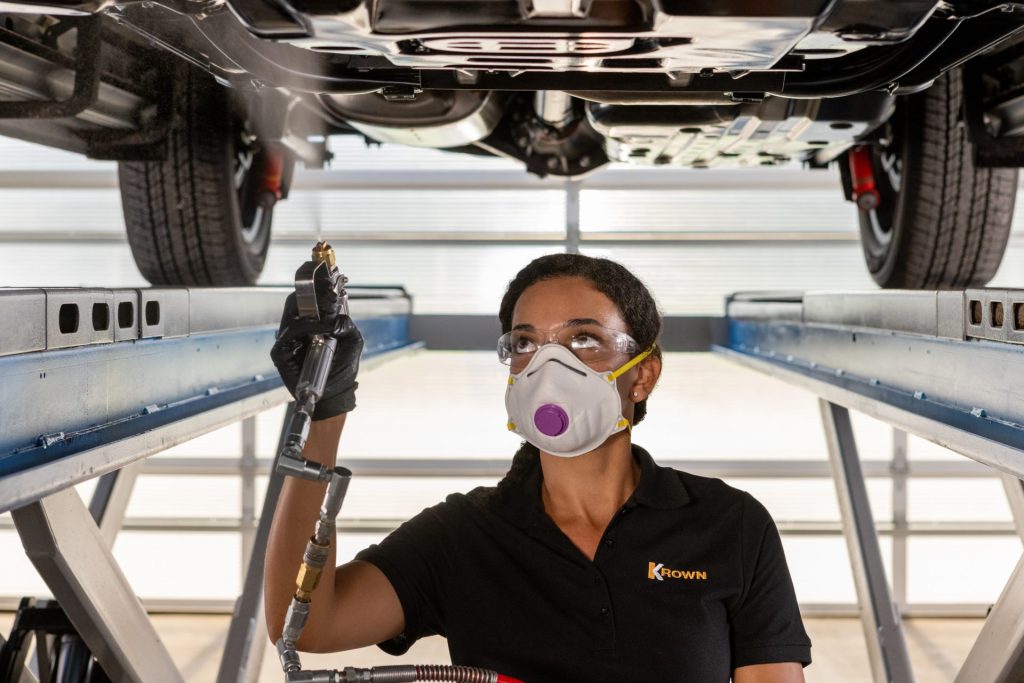It creeps silently and unseen in hidden nooks and crannies on your car, but rust on the body and undercarriage is more than just an eyesore.
Otherwise known as iron oxide, car rust forms when a metal that contains iron – like your car’s body – is exposed to oxygen and moisture. Add in road salt that cakes as it dries, and rust can shorten a vehicle’s lifespan and damage its structural integrity.
Stop the rust creep
For most Canadian drivers, winter means dealing with icy conditions. While snow tires are a must-have (and CAA Auto Insurance offers Members an extra 5% off for using them between November 20 and April 15), road salt is an important way to keep motorists safe.
Otherwise known as sodium chloride, the Government of Canada reports that five million tons of road salts are used in Canada every year. Unfortunately, in the cooler months, all that extra salt on the wet roads speeds up metal corroding. The problem is once rust starts, it can quickly spread. Your best form of protection is to book your annual rustproofing appointment.
There are a few strategies that can help keep the creep under control.
Wash your vehicle regularly throughout winter and spring.
Touchless car washes typically clean the underside of the car, as well as the visible areas. Plan to get a car wash every time you fill up. CAA Members get 3 cents off a litre and 10% off car washes at participating Shell stations.
Get your car treated with rust control.
Rust control provides a huge list of benefits, in addition to helping your vehicle last longer. By preventing rust, you are safeguarding its structural integrity. Did you know rustproofing protects thousands of vital spots that hold your vehicle together? In a roadside collision, corroded sections of the car could break in a way not planned by the manufacturer and result in injuries.
What’s more, a rust-free vehicle will need fewer repairs from moving parts like brakes or electronic components corroding. And, when it comes to resale, consumers automatically look for rust corrosion as part of their purchasing decision
What do rust control products contain?
There are a few methods used in rust control. The most common is a petroleum-based product containing rust inhibitors, such as that used by Krown© Rust Control. The spray used is non-flammable, non-reactive and non-corrosive.
Will it drip after it’s applied?
For rust control to work effectively, it has to be sprayed into seams and around spot welds. It also must be thin enough to penetrate anywhere water can get into. Some excess product will drip off, usually within the first two days.
How long will rust-proofing last on a car?
Once applied, rust proofing will last a year under normal conditions. It also doesn’t matter when it’s applied – it can be installed any time of year.
Can my hybrid be rust-proofed?
Hybrid car manuals don’t recommend rust-proofing, mostly because some rust-proofing products leave a heavy coating that can impact the functioning of sensors. However, some lighter products, such as that used by Krown© Rust Control, have been successfully. It’s important to speak to the technician before proceeding.
Have questions about your auto insurance?
If you have questions about your auto insurance or would like a complimentary policy review, connect with a licensed CAA Insurance Agent by visiting us online.
Save with CAA
Did you know CAA Members save $10 on Krown® Rust Control application and up to 20% off Krown products?
Underwriting rules apply. Rating applied to vehicles with four (4) winter tires that meet the winter tire designation. Installation no later than November 20 and removed no earlier than April 15.
Auto Insurance is underwritten by CAA Insurance Company. Certain conditions, limitations and underwriting guidelines apply.

